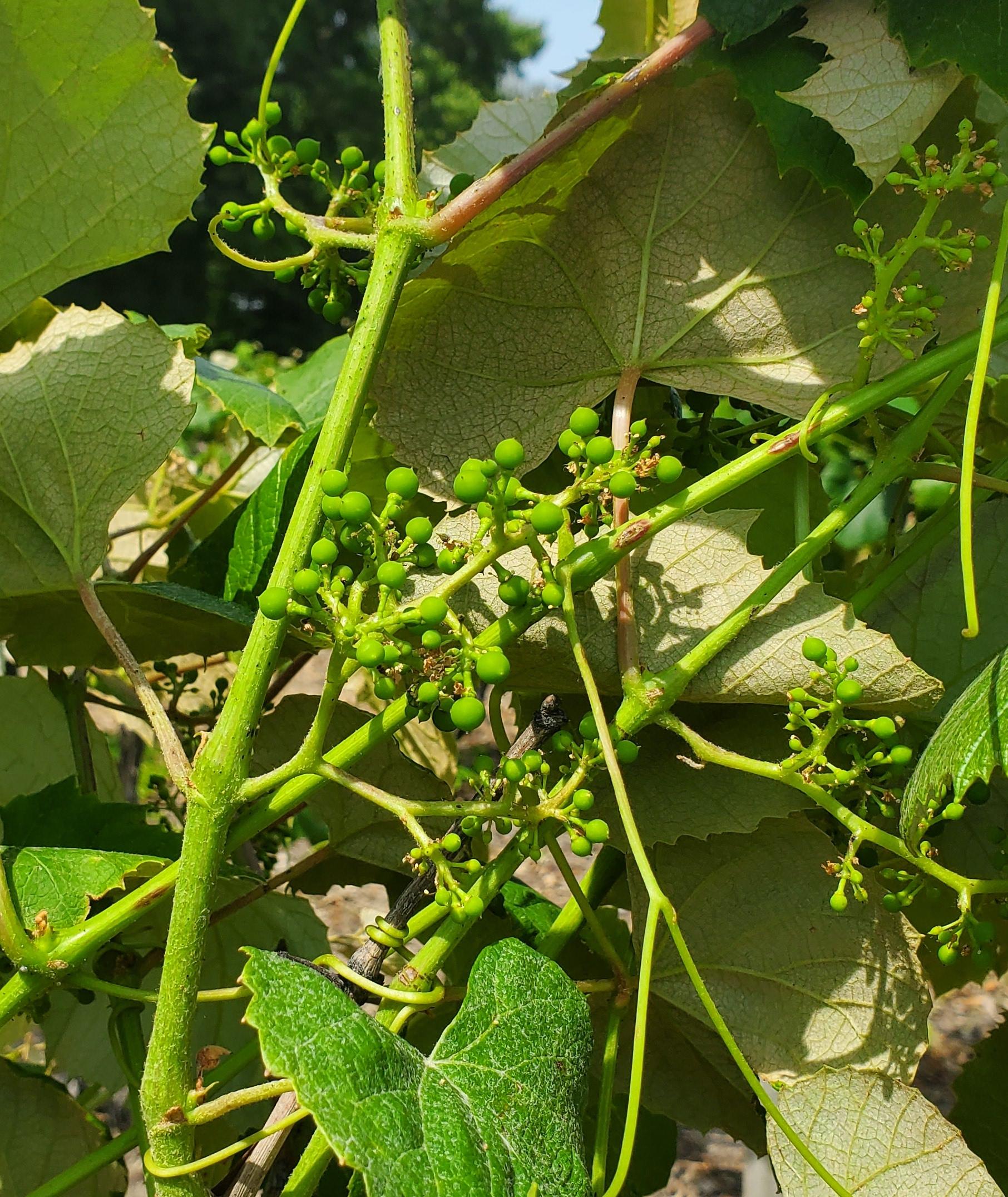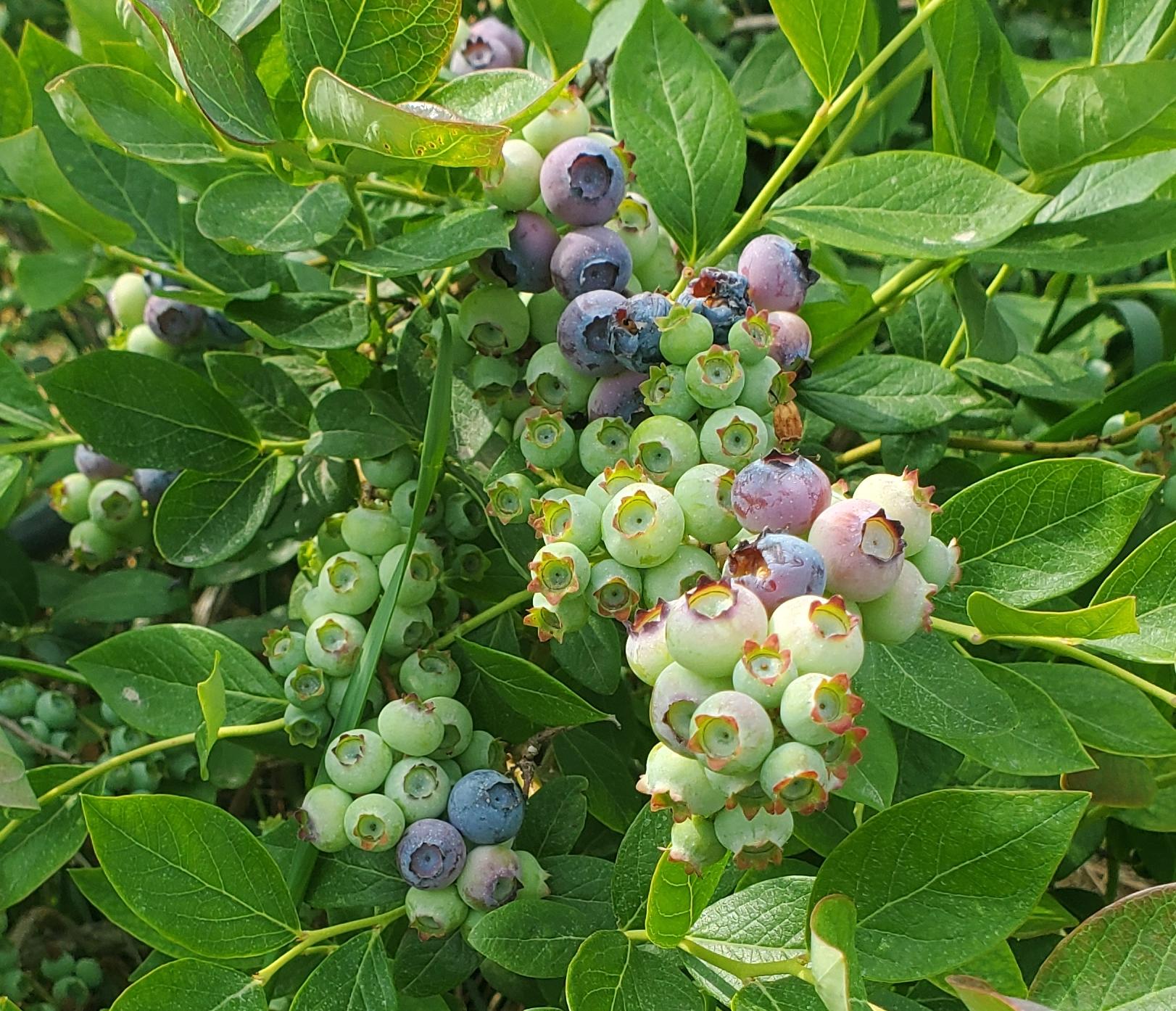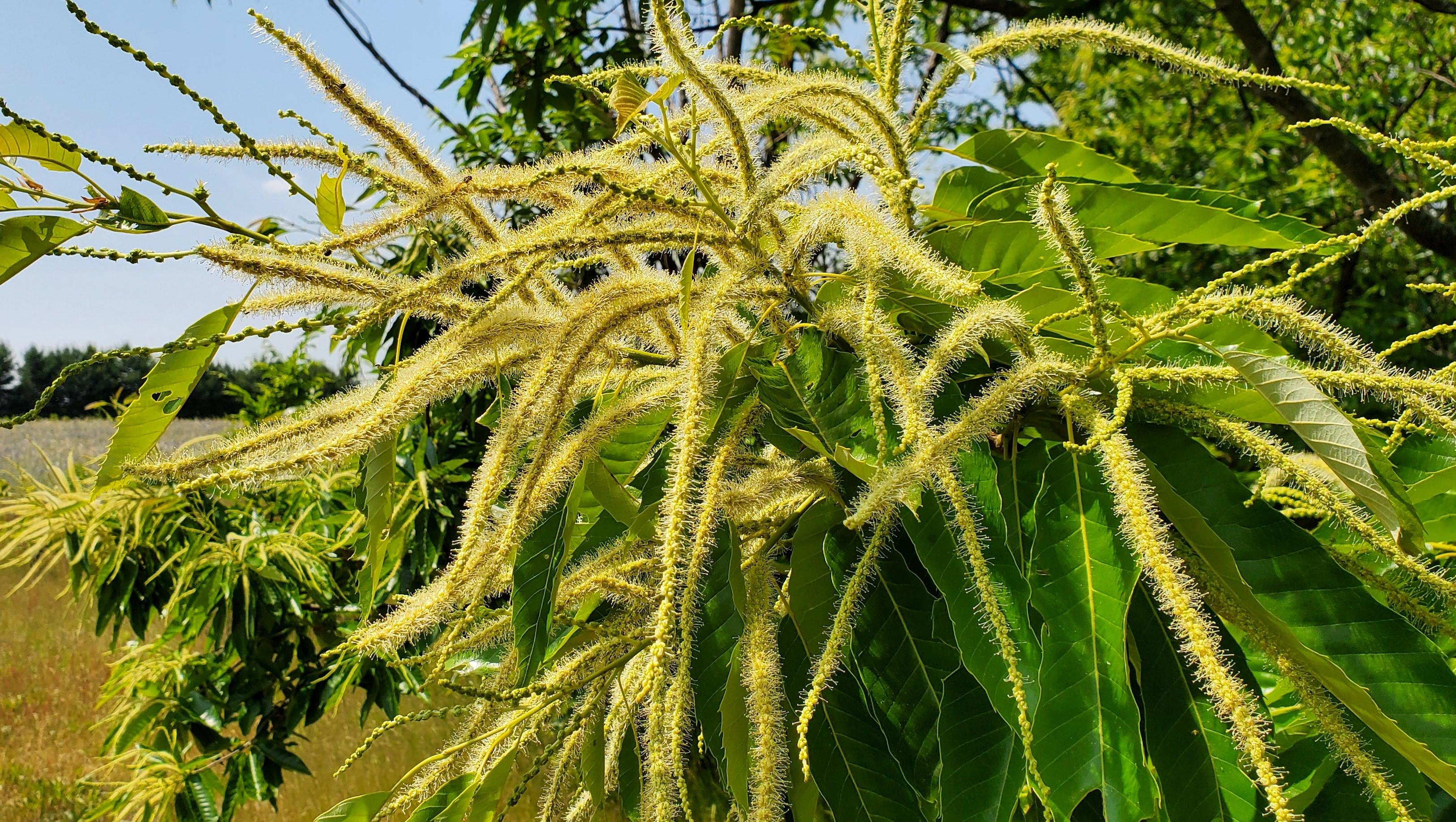Southwest Michigan fruit update – June 20, 2023
Sweet cherry harvest is beginning. Tart cherries are also turning red. Tart harvest predictions are for a couple days ahead of the long-term average.

Weather
Last week was cool. High temperatures were in the 60s degrees Fahrenheit to lower 70s F for much of the week. Nighttime lows were in the 50s F. Temperatures began rising over the weekend to the mid 80s F for the start of this week. The low temperatures also increased by 10 degrees to near 60 degrees.
A cool front passed through the region on Tuesday bringing steady rain for much of the day. Total amounts were generally a quarter to three quarters of an inch of rain but a couple locations are reporting around an inch. This was enough to wet the top few inches of soil, but not enough to break the drought.
Soils are very dry. The US Drought Monitor is indicating that the entire southwest Michigan region is in a moderate drought condition. Soils moisture levels are at the wilting point at both the 8-inch and 16-inch depths in most soils. In these conditions, small and young fruit crops are seeing stress and leaves are wilting. For larger trees with deeper roots, stress is less visible but nutrient uptake by the roots near the surface is still compromised. If this drought continues, expect small fruit and/or additional fruit drop.
With the cool weather, we collected fewer than average number of degree days last week, 140 GDD base42 and 83 GDD base50, respectively. Soils are very dry.
|
Southwest Michigan GDD summary from March 1 – June 19, 2023 |
|||
|---|---|---|---|
|
Station |
GDD 42 F |
GDD 45 F |
GDD 50 F |
|
Benton Harbor (SWMREC) |
1301 |
1088 |
785 |
|
Lawton (Lawton) |
1315 |
1103 |
799 |
|
Fennville (TNRC) |
1151 |
949 |
667 |
|
Average for the SW region |
1259 |
1050 |
755 |
|
Average last week |
1120 |
932 |
672 |
Dry conditions should continue. There are some chances of afternoon showers beginning Friday and continuing through the weekend but not much accumulation is expected.
Temperatures should stay in the mid to upper 80s F for much of the week with a small drop of a couple degrees over the weekend. The lows will also be warm with temperatures to stay in the low to mid 60s F.
Tree fruit
Rain last Tuesday of less than an inch helped somewhat, but irrigation is needed for many orchards. Discolored foliage and restricted terminal growth due to water shortage is common on sandy sites. Trap catches of oblique banded leaf roller at the Trevor Nichols Research Center jumped last week, giving a biofix of 6/12. Protection against larvae is recommended approximately 350-450 DD base 42 F from this biofix date, or approximately June 25 for central Berrien County.
Peach and nectarine fruit are sizing rapidly with hand thinning underway. Protection of trunks and limbs against borers is needed now. Flight of the second generation of oriental fruit moth should be starting soon. White circular patches of rusty spot are very conspicuous on fruit of some varieties with some trees having more than 50% of the fruit affected. Cover sprays for peach scab run from petal fall to third cover and from shuck split to pit hardening for rusty spot (powdery mildew) for susceptible varieties.
Cherry Montmorency fruit are generally red with fruit sizing being inhibited by dry conditions. Some local estimates predict that Montmorency harvesting will start before the July 4 for the southwest region. Some growers are applying ethrel now to assist in fruit separation from the tree at harvest. Sweet cherry harvest of early varieties are underway in the southern end of the region. The rains last week were cherry leafspot infection periods. Cherry fruit flies were detected in low numbers in traps at the Trevor Nichols Research Center in Fennville last week. Spotted wing drosophila trap catches typically jump in late June. Cool weather favors population growth of the various cherry fruit flies, especially spotted wing drosophila. Obliquebanded leafroller larvae may need treatment over the next week to keep them out of cherry foliage and cherry harvest tanks. Fungicide treatment for brown rot is important as fruit start to color.
Apple fruit drop is still continuing. Mummies still hanging in the tree can serve as inoculum sources for diseases such black rot and bitter rot. Calcium sprays for bitter pit suppression and summer NAA treatment are underway for many area orchards. The EnviroWeather model for sooty blotch and flyspeck diseases predicts that more wetting is needed before spray programs specific for these diseases. Insects of concern are leafrollers, oriental fruit moth, and codling moth. Fruit entries by first generation codling moth began showing up last week. Mealybug have been found in low numbers on area Golden Delicious and Red Delicious.
Pear June drop is generally done. Pear psylla nymphs and adults are common on leaves and fruit in some orchards. Pear fruit are generally too hard at this stage to attract codling moth.
Small fruit
Grapes Vinifera bloom continues. Juice grapes and early hybrid bloom is ended and fruit are continue to increase in size. Some fruit are nearing or at buckshot.
Rose chafer populations have jumped in the last week. This beetle emerges from the ground this time of year. Last week’s rain event likely softened the soil enough for them to emerge at once. Rose chafer are generalist feeders and typically don’t cause enough damage to be a concern, but insecticide treatments can be effective if large populations are present.
Tumid gall maker has been reported in the area. This is a fly that causes red splotching and galls on leaves, shoots, and developing clusters. Extensive infestations can affect photosynthetic efficiency and reduce cropload. They are primarily a pest of hybrid wine grapes but have been seen on Concord grapes in the past as well. The only methods of treatment are physical removal of the infested tissues or application of Movento at the first signs of infestation.
With grapes in or just post-bloom, all major diseases are targets for fungicide sprays including the bunch rots: phomopsis, black rot, anthracnose, downy mildew, botrytis bunch rot, and powdery mildew. Rain events like the one over the weekend and later today can be infection events.

Blueberry early varieties are beginning to color up in southern Berrien County, up through Van Buren county but, the most advanced varieties are still less than 10% blue. Most varieties are showing green fruit with some blue beginning to show on early-season varieties. Growers have begun thinking about berry rot sprays to control anthracnose and alterneria. Cranberry and cherry fruitworms are flying and laying eggs now. Additional cover sprays to manage these moths in high infestation sites may be necessary in the next week or two. SWD is expected to be delayed this year due to the hot, dry weather.

Strawberries harvest is continuing from southern Berrien county up through northern Van Buren. Maintain fungicide coverage to protect the leaves and help prevent fruit rots as fruit continues to ripen, especially with the heat. Some early locations are expecting to finish harvest in the next week or so. Those who are done with harvest are beginning to renovate.
Brambles fruit are beginning to show color on early raspberry varieties.
Currants and gooseberries: Champagne currants harvest is beginning this week. Red and black currants are starting to color up as well. Harvest is not too far away.
Nut crops: Chestnuts are flowering now. Asian gall wasp damage is beginning to be seen. Galls at the bases of the leaves are from eggs laid last summer. Adult emergence usually occurs during July in our area. Hazelnut bloom will be soon. Flowers are visible.

Announcements
Our regular southwest Monday fruit IPM updates are once again a hybrid format. The meetings are held in-person with virtual attending also available online. Our first meeting was Monday, April 10, at 5:30 p.m. and will continue through the rest of the season. You need to register to receive the Zoom link and password for these meetings. The webinars are free and one pesticide applicator credit is available for each meeting. The same Zoom link will be used with all the Monday meetings—you only need to register once.
Join the Michigan Grape Society on June 21 for their June Grower's Social at Michigan Wine Company in Fennville, Michigan. The owner, winemaker, and viticulturist Joe is going to be talking about his experience starting a winery and vineyard from the ground up, including his triumphs and pitfalls. The event starts at 6:00 p.m. Tickets are $30 per person and cover the cost of both food and wine.
If you’d like more blueberry information in your inbox, sign up for Blueberry Bites! New this year, Blueberry Bites is a blueberry-focused, bite-sized, weekly update from the blueberry team at MSU.
This work is supported by the Crop Protection and Pest Management Program [grant no 2021-70006-35450] from the USDA National Institute of Food and Agriculture. Any opinions, findings, conclusions, or recommendations expressed in this publication are those of the author(s) and do not necessarily reflect the view of the U.S. Department of Agriculture.



 Print
Print Email
Email
